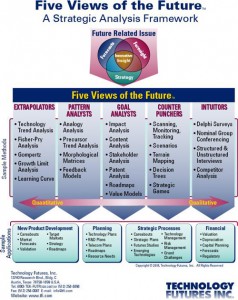The recovery from the 2008-2009 recession has been tepid at best, and has disappointed many. Coming out of such deep recessions we have historically seen accelerated growth for several years, which has somewhat softened the pain of recessions and enabled businesses large and small to recover their losses. This tepid recovery is projected to develop into slower growth long-term, as has been concluded in independent evaluations by a leading economist and a leading money manager, according to the WSJ article “U.S. Stocks: Look Out Below?” While not the point of the WSJ article, this slower economic growth will directly and necessarily reduce the wealth creation of firms, which will directly and necessarily impact wage expectations for 2013 and beyond.
The first impact that this slower growth will have on wage expectations is through an increased gap between the income earned by the top tier wage-earner and rest of the workforce. While not desirable for the economy, this will be the logical result of an economic environment that has less opportunity for growth. This environment will increase the relative value of workers who are able to find opportunities for growth, especially those able to lead the implementation of expansion into new areas of business for company ownership. The most critical of these will be the CEO’s and company leaders who are able to successfully implement these growth initiatives; the pay of these individuals will therefore increase due to this value that they are bringing to the ownership.
The rest of the workforce, meanwhile, will be pressured from two sides. The flip side of the previous paragraph is that although the work they do is still important, it is not as critical because the Big Question will not be “How Can We Do This?” but more fundamentally “What Should We Do?” On the other hand, the slower growth will reduce the availability of jobs and result in a higher unemployment rate. As a simple matter of supply and demand, this slower demand will necessarily work against salary growth for the bulk of the workforce.
This raises the inevitable question of how wage negotiations must be managed especially with a unionized labor force. Unionized labor forces in the long term have shown negative impacts to the profitability of a company, although they have been able to “negotiate” lucrative contracts in the short run. This long-term negative impact has resulted in bankruptcies at GM and Chrysler, and most recently at Hostess. A concept missed by the unionized labor force is the fact that if the growth in profit does not exceed the increase in value that the labor force provides such as through higher efficiency, the long-run viability of the business is at risk. From the perspective of the labor force, the workers as a whole and every worker individually must pursue how he can add more value to his work for his employer, and this will be the only way to justify wage increases.
In a low-growth environment, what ideas are there to reduce the income gap?
U.S. Stocks: Look Out Below?
Hostess Preparing For Bankruptcy-Protection Filing
Right to Work Isn’t All It’s Cracked Up to Be


